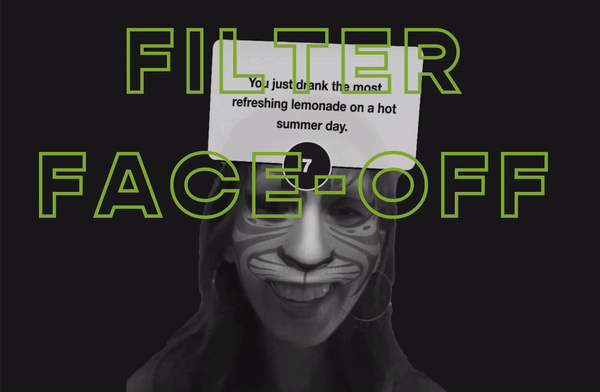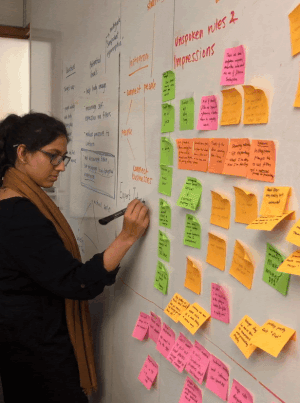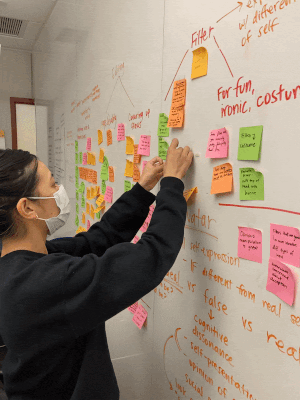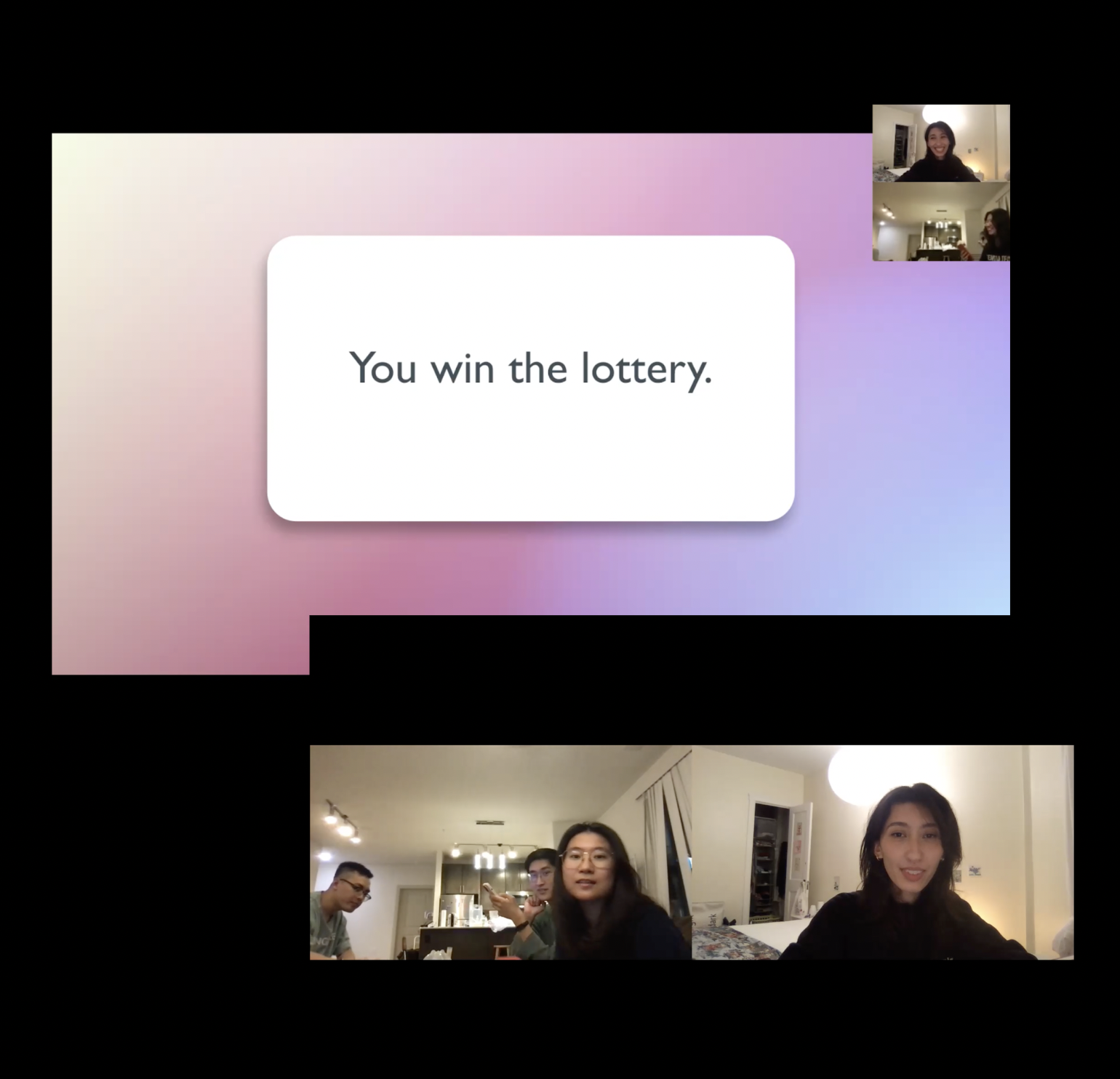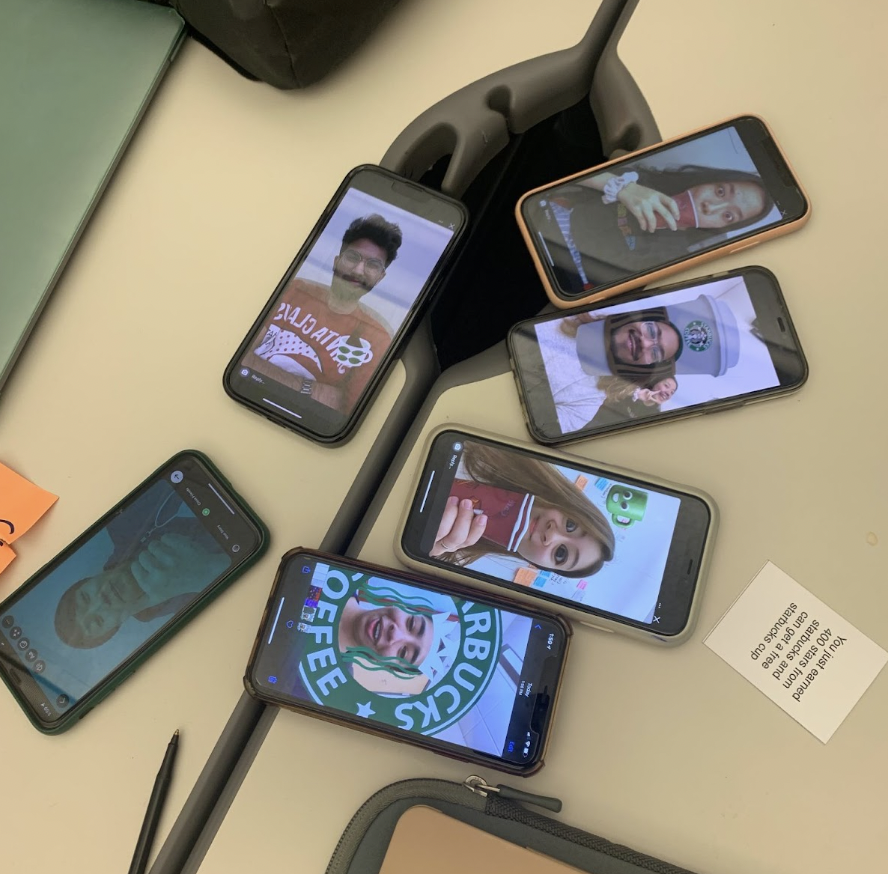OVERVIEW
Current development of AR (augmented reality) is most concentrated not in gaming but rather in the exploration of face filters on social media platforms like Instagram. How might this mass experiment of filter usage amidst the rise of selfie culture show how technology changes the way we form our identities, represent ourselves, and relate to others?
To promote healthy online behaviors in young adults, our team designed an interactive, gamified experience using embedded persuasive design techniques.
